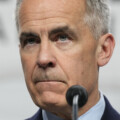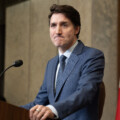The elevation of single-payer health care to something of a national icon means that technocratic discussions about funding formulas and service delivery provisions tend to loom larger over our politics and society than they probably ought to. The wall-to-wall coverage of this week’s first ministers’ meeting is a case in point.
If one strips back the political hyperbole and the tendency on the part of governments to obscure facts by mixing new and old funding and choosing long timeframes, the crux of the federal-provincial deal is itself not that big of a deal. And that’s actually a good thing.
Let me explain but bear with me: it requires a bit of policy context including the evolution of the growth rate for the Canada Health Transfer over the past decade or so.
The Harper government (of which I was part) inherited its predecessor’s 10-year health accord with the provinces which included a promise to increase the CHT by 6 percent annually. We sustained the commitment and even extended it for three more years.
Yet Finance minister Jim Flaherty informed the provinces in December 2011 that thereafter CHT’s growth rate would be set based on a three-year rolling average of nominal GDP. The shift was designed to put CHT’s growth on a sustainable footing that tracked the economy on a cyclical basis.
But we also included a 3-percent floor as an insurance policy. If for some reason nominal GDP dropped precipitously over a three-year period, federal transfers would remain stable. At the time, then-Prime Minister Harper asked Finance officials to check the historical data to see if such a scenario had ever occurred. Their answer was no: if the formula had been in place over previous decades, the 3-percent floor would have never been triggered.
As Flaherty told the media and his provincial counterparts, the expectation was that under the new policy, the CHT’s annual growth rate would change from 6 percent to something approximating 4 or 4.5 percent on an ongoing basis.
The pandemic confounded Finance’s analysis. The massive economic contraction caused by a public health crisis would have reduced the growth in federal health transfers at the precise moment that provincial health-care systems were facing once-in-a-lifetime pressures. The Trudeau government rightly stepped in to stabilize and ultimately augment federal health-care funding to the provinces.
Then as the economy jolted out of the pandemic, the CHT’s growth rate grew along with it. At least for the next couple of years, tying the CHT’s growth to nominal GDP has the effect of essentially restoring its growth rate to roughly 5 or 6 percent.
That brings us to this week’s federal announcement. The Trudeau government’s proposal is somewhat complicated involving a combination of a short-term boost and a medium-term increase to the escalator. But, according to University of Calgary economist Trevor Tombe, the cumulative effect is to essentially raise the CHT’s floor from 3 percent to 5 percent and change its average annual growth from just over 4.5 percent in the baseline to just under 5.5 percent.
Put differently: federal health transfers will now be a bit higher than they would have otherwise been in the coming years and a bit less than they were in the previous decade. We’ve essentially ended up somewhere between the growth rate under the 10-year health accord and where the Harper government set it back in 2011.
It will translate into incremental health-care dollars—the federal government projects $46B over the next decade—spread across ten provinces. But it doesn’t fundamentally change the basic challenge facing provincial governments which is a structural gap between health-care supply and inexorable demand.

In that sense, those who are understandably concerned that an infusion of federal funding would blunt the incentives to pursue the kind of reforms recently announced by Ontario Premier Doug Ford can find some relief. The marginal increase in federal funding shouldn’t in and of itself cause provinces to abandon their reform ambitions. A one-percentage-point increase in the growth rate of federal health transfers is no substitute for solving the supply-demand disequilibrium at the heart of Canada’s health-care conundrum.
The real question will be whether there are any incremental federal conditions attached to these funds. While there’s a strong case for loosening the pre-existing conditions under the Canada Health Act (including permitting greater experimentation with co-payments and other forms of extra billing), they haven’t been a major impediment to the recent string of provincial reforms to leverage greater private delivery within the single-payer model.
If, however, these federal funds come with greater strings attached—especially given that they don’t fundamentally change the equation for the provinces—they would be wise to reject them. It wouldn’t be worth it.
But if the extra dollars come with few conditions—and in fact, validate the current trajectory of provincial health-care reforms—then this week’s announcement is a mostly innocuous development that, notwithstanding the noise and attention, leaves us in the same position we were in last week.
Meaningful health-care reform is ultimately going to come from the provinces using a mix of policy tools, including the private sector, to expand the supply of doctors, nurses, surgeries, tests, and so on. It was never going to come from Ottawa. And this week’s federal-provincial deal merely confirms it.
Recommended for You

The Notebook by Theo Argitis: Mark Carney’s first major tests

The Weekly Wrap: Trudeau left Canada in terrible fiscal shape—and now Carney’s on clean-up duty

‘Another round of trying to pull capital from Canada’: The Roundtable on Trump’s latest tariff salvo

‘We knew something was coming’: Joseph Steinberg on how Trump is ramping up his latest tariff threats against Canada




